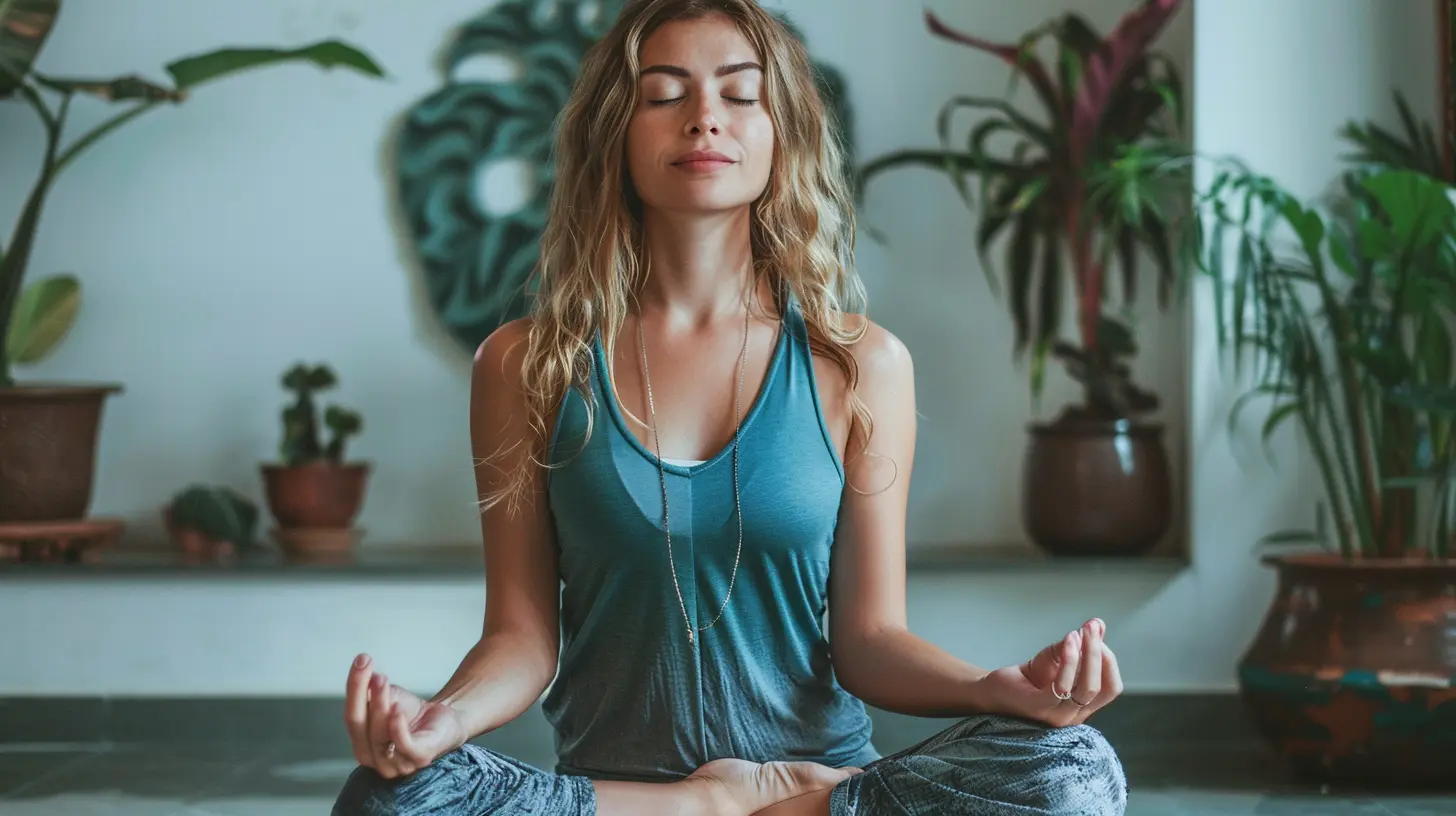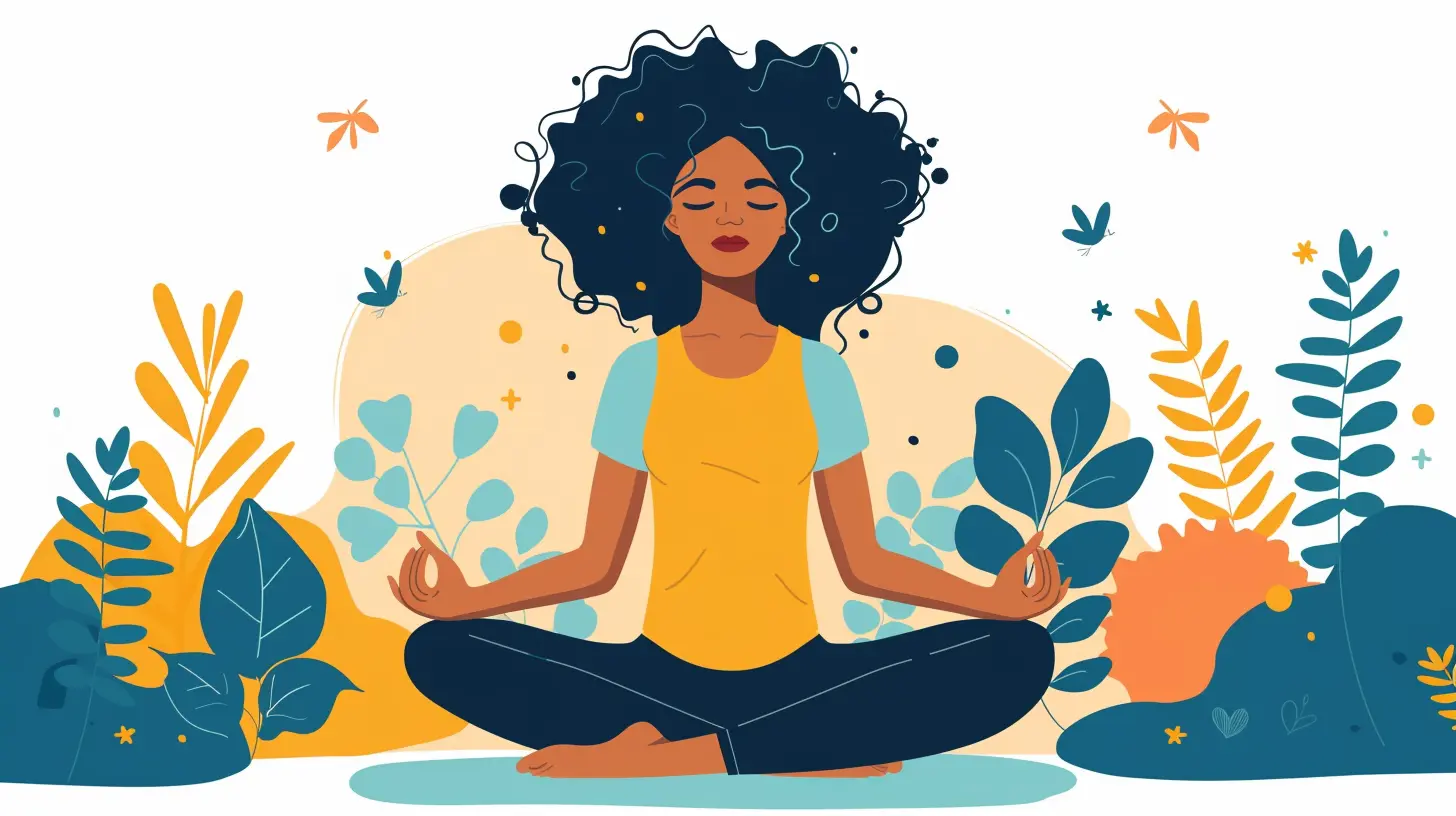16 February 2025
In our fast-paced, overwhelming world, it's no wonder that mood disorders like anxiety and depression are on the rise. Many of us are constantly juggling work, relationships, and personal challenges, often feeling like we’re barely keeping our heads above water. But what if the key to improving our mental health was already within us? What if a simple, ancient practice could bridge the gap between our minds and bodies, helping us find balance and peace?
Enter yoga.
Yoga isn’t just about twisting yourself into impossible shapes or perfecting that headstand for Instagram. It’s about creating a harmonious connection between your mind and body. And when you can tap into that connection, it becomes a powerful tool for managing mood disorders. So, let’s dive into just how yoga can help with mood disorders and why it might be the practice you didn’t know you needed.

What Are Mood Disorders?
Before we get into the nitty-gritty of how yoga helps, let’s take a quick look at what mood disorders actually are. Mood disorders are mental health conditions that primarily affect a person’s emotional state. The two most common types are:- Depression: Characterized by persistent feelings of sadness, hopelessness, and a lack of interest in activities.
- Anxiety: Marked by excessive worry, fear, or nervousness that affects daily life.
Mood disorders can be debilitating, affecting everything from your personal relationships to your ability to get out of bed in the morning. But here’s the thing: they’re not just “all in your head.” They have physical effects on your body too, such as fatigue, muscle tension, and even digestive problems. This is where yoga comes into play.

The Mind-Body Connection: What’s It All About?
You’ve probably heard the phrase “mind-body connection” thrown around in wellness circles, but what does it really mean? At its core, the mind-body connection is the idea that our mental state influences our physical health, and vice versa.When you’re stressed, for example, your body responds by releasing stress hormones like cortisol and adrenaline. Over time, chronic stress can lead to physical symptoms like headaches, high blood pressure, and even a weakened immune system. Similarly, if your body is tense or in pain, it can impact your mental well-being, leading to feelings of frustration, anxiety, or sadness.
Yoga works by fostering a deeper awareness of the mind-body connection. Through a combination of physical postures (asanas), breathing exercises (pranayama), and meditation, yoga encourages a balance between the physical and mental aspects of health. In other words, it helps you tune into what your body is telling you, so you can better manage your emotional state.
Yoga and the Brain
Let’s get a bit nerdy for a second, shall we? When you practice yoga, it’s not just your muscles stretching and contracting. There are actual changes happening in your brain too. Studies show that yoga increases the production of gamma-aminobutyric acid (GABA), a neurotransmitter that helps calm the nervous system and reduce anxiety.Yoga also stimulates the parasympathetic nervous system, often referred to as the "rest and digest" system. This is the opposite of the "fight or flight" response that’s triggered during times of stress. By activating the parasympathetic nervous system, yoga promotes relaxation, slows down your heart rate, and lowers blood pressure—all of which are incredibly beneficial for managing mood disorders.

How Yoga Helps with Depression
Depression can feel like a heavy weight that you just can’t shake off. It’s not just sadness; it’s a sense of hopelessness and disconnection from the world around you. But yoga has been shown to make a big difference for those struggling with depression.1. Boosts Mood by Releasing Endorphins
Here’s the cool thing: exercise, including yoga, boosts the production of endorphins—your body’s natural mood lifters. Endorphins are those feel-good chemicals that make you feel happier and more energized. Even just 20 minutes of yoga can lead to an improvement in mood.2. Promotes Mindfulness
Depression often drags you into the past, making you dwell on things that have already happened. Yoga emphasizes mindfulness, which is all about staying in the present moment. By focusing on your breath and the sensations in your body during a yoga session, you can break the cycle of rumination—a common symptom of depression.3. Improves Self-Esteem
When you’re depressed, it’s easy to fall into negative self-talk. You might think you’re not good enough, smart enough, or successful enough. But yoga teaches you to approach yourself with compassion. As you progress in your practice, mastering new poses or simply showing up for yourself on the mat can boost your confidence and self-worth.
How Yoga Helps with Anxiety
Anxiety is like a constant hum of worry in the background of your mind. It’s that nagging feeling that something is wrong, even when everything seems fine. Yoga can be an incredibly effective way to calm the storm of anxiety.1. Regulates Breathing
Have you ever noticed how your breath changes when you’re anxious? It becomes shallow and rapid, which can actually make your anxiety worse. Yoga incorporates controlled breathing exercises, like pranayama, which help slow down your breath and, in turn, calm your mind. Deep breathing sends a signal to your brain that it’s okay to relax.2. Reduces Physical Symptoms of Anxiety
Anxiety doesn’t just affect your mind; it affects your body too. You might experience muscle tension, headaches, or digestive issues. Yoga helps to release physical tension through stretches and poses, which can alleviate these symptoms and help you feel more at ease.3. Increases Body Awareness
Anxiety often disconnects you from your body. You might feel like you’re constantly on edge or that you’re out of sync with yourself. Yoga encourages you to tune into your body’s sensations, which can help you recognize the early signs of anxiety and take steps to manage it before it spirals out of control.The Science Behind It: Research on Yoga and Mood Disorders
If you’re still skeptical about the impact of yoga on mood disorders, don’t worry—you’re not alone! Fortunately, there’s plenty of science to back up these claims.1. Studies on Yoga and Depression
A 2017 study published in Psychiatric Research found that participants who practiced yoga twice a week for eight weeks showed significant reductions in depressive symptoms compared to those who didn’t practice. Another study in The Journal of Clinical Psychiatry found that yoga was effective in reducing symptoms of both major depressive disorder and chronic depression.2. Studies on Yoga and Anxiety
According to a 2018 review in the Journal of Anxiety Disorders, yoga was found to significantly reduce symptoms of anxiety in both clinical and non-clinical populations. Participants reported feeling calmer, less anxious, and more in control of their emotions after practicing yoga regularly.While more research is needed to fully understand the mechanisms at play, the current evidence is pretty clear: yoga is a powerful tool for managing mood disorders.
Getting Started with Yoga: Tips for Beginners
If you’ve never tried yoga before, getting started can feel a little intimidating. But don’t worry—you don’t need to be super flexible or athletic to benefit from it. Yoga is for everyone, regardless of your fitness level or experience. Here are a few tips to help you get started:1. Start Small
You don’t need to commit to an hour-long session right off the bat. Start with just 10-15 minutes a day and gradually build from there. Even a short practice can have a big impact on your mood.2. Focus on Your Breath
Your breath is your anchor in yoga. Whenever you feel overwhelmed or distracted, bring your focus back to your breath. This will help calm your mind and keep you grounded in the present moment.3. Find a Style That Works for You
There are many different styles of yoga, from the fast-paced vinyasa to the more meditative yin yoga. Experiment with different types until you find one that resonates with you and makes you feel good.4. Be Kind to Yourself
Yoga is a journey, not a destination. Don’t worry if you can’t touch your toes or hold a pose for long. The most important thing is that you show up for yourself and listen to your body.Conclusion: The Power of Yoga for Mood Disorders
The mind-body connection is real, and yoga is one of the most effective ways to tap into it. Whether you’re dealing with depression, anxiety, or just the everyday stresses of life, yoga offers a holistic approach to improving your mental well-being. Through mindful movement, breath control, and self-compassion, yoga helps you find balance and calm in a chaotic world.So, why not roll out your mat and give it a try? Your mind—and your body—will thank you.







Holden Barron
This is fascinating! I’m intrigued by how yoga influences mood disorders—does it primarily impact brain chemistry, or are there deeper psychological aspects at play? I’d love to learn more about the underlying mechanisms involved!
April 8, 2025 at 4:21 AM